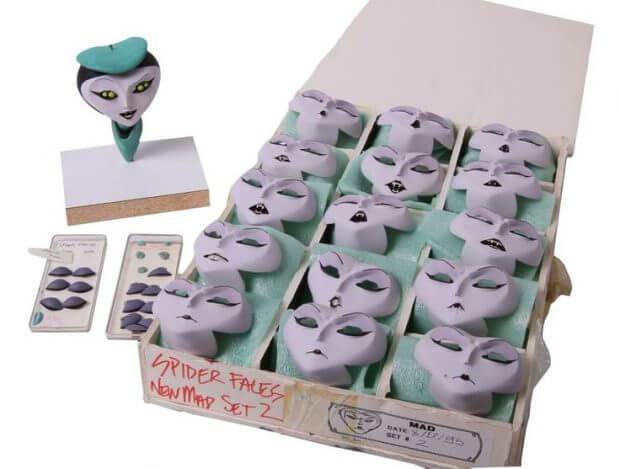Roald Dahl’s 100th Birthday- an animated reflection
Today marks what would have been Roald Dahl’s 100th birthday. The beloved author is responsible for some of the most inspiring, dark and funny children’s books of all time. His tales have been revisited thousands of times, being reimagined as films, stage plays, musicals, TV specials and, of course, animation. Naturally it was these animated features that came from his stories were – and remain – some of my all-time favourite films. Up and down the country cinemas have been putting on specialist events and screenings of films adapted from (and inspired by) his work, so to embrace the party spirit of this momentous occasion today we’ll be doing a rundown of the animated films and the people that breathed new life into tales, both mesmerising and chilling, of giants, anthropomorphised foxes and giant, airborne fruit!
The BFG
The BFG was recently re-adapted into a giant Hollywood CGI blockbuster directed by Steven Spielberg, proving there is just as much hunger for the author’s work as there ever was. The original version of The BFG had much more humble origins, at the mighty but unfortunately now defunct British studio Cosgrove Hall. Directed by the marvelous Brian Cosgrove, The BFG was a film I have very strong memories of as a child. There was something enchanting about the green glow of the dreams coming out of the Giant’s dream trumpet and utterly terrifying about the Evil giants. The warm feeling you got from the style of Cosgrove hall, paired with the very British sensibilities of the film, really struck home to me both the beauty of the story and its ability to strike fear into children. The film was able to emotionally educate its young audience whilst still being a totally fantastical, original story, something so often missing from mainstream animated films today
Fantastic Mr. Fox
Marmalade skies and autumn trees, this treacle covered world is Wes Anderson’s adaption of Dahl’s 96 page story. To say the film took the basic story and ran with it would be an understatement; there isn’t much to go on from the original text but what remains is a feeling, an emotive tale of loss, pride and family. The film is overwhelminly beautiful and also has one of the most gorgeous ‘Art Of’ books in existence. In my humble opinion this film is both a pitch-perfect animated film as well as Anderson at his best – it’s just one of those films I will hear nothing bad about:
“It’s not super exciting for kids-”
“Grow up.”
“The book was better-“
“Yeah, you’re entitled to your opinion, but I don’t care.”.
The final result is a testament to the style, technique and storytelling ability of stop-motion animation. The sheer craft at play here is incredible, the in camera practical effects, the use of fast-paced, low-frame cutout animation mixed with beautifully intricate and fluid movements. Fantastic Mr. Fox is also one of the few films where I noticed the quality of the sound mix (sound not being my thing at all – normally as long as I can hear, I’m good); all the sound was recorded on location, if the characters were underground or in a field, so were the actors. It’s this attention to detail that makes Anderson such an interesting and beloved director. This film is my top five of the best stop-motion features of all time, and it’s in good company with the last of our animated adventures from the late great Dahl.
James and The Giant Peach
Another childhood favourite, the combination of lively, cartoonish live-action with the beautifully-carved and stylised stop-frame has made this film one of the most memorable films in my life. Directed by Henry Selick in 1996, the Disney-backed film visualised one of Dahl’s most beloved and surreal stories in a remarkable way. With Dahl having refused to give his blessing for an adaption of the story within his lifetime, it was actually his widow who allowed the adaption to go-ahead, later saying she believed Dahl “would have been delighted with what they did with James. It is a wonderful film”. High praise indeed. The combination of story, puppet design and musical numbers really stand out in this film. The animation of course is flawless, but this style was something new at the time, almost art deco with its angled shapes and use of line and symmetry. Creepy-crawlies were made to look cheerful, loving and happy in the way only Selick, who had previously directed The Nightmare Before Christmas, knew how.

The film also boasted some incredibly intricate facial rigs , making use of an early version of replacement faces (unlike the high-tech 3D printing used by studiso such as LAIKA today) and a super skinny armature for miss spider similar to the one used by Selick later for Coraline‘s Other Mother. But at the end of the day it’s a film based on a story of a lonely little boy, who just wants to be loved.
Roald Dahl is the master, the go-to guy for children’s books, whose originality and daring has raised a generation of creative and brave artists, designers and filmmakers and will continue to for decades to come. It looks unlikely that the world will ever get enough of the stories, adaptions and re-workings of his classic tales and I am eternally grateful that he put pen to paper to create these marvelous worlds and fantastical characters that show the best, the worst – and all the colours in-between – of human nature. Even when that human nature is in the body of an animal.

